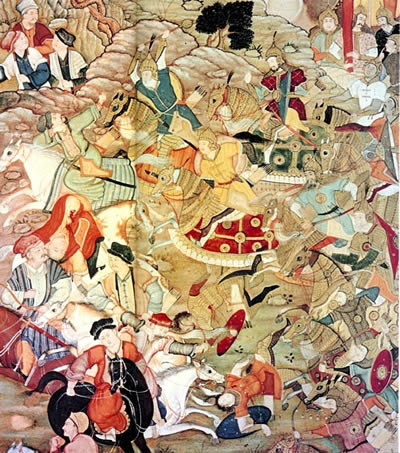
Detail of illustration from History of the Moghuls,
a 17th-century Indian text, Gulestan Palace Library, Tehran
Horses: The Key to the Mongols' Military Strategy
Chinggis Khan understood the importance of horses and insisted that his troops be solicitous of their steeds. A cavalryman normally had three or four, so that each was, at one time or another, given a respite from bearing the weight of the rider during a lengthy journey.
Before combat, leather coverings were placed on the head of each horse and its body was covered with armor. After combat, Mongol horses could traverse the most rugged terrain and survive on little fodder.
Mobility and surprise characterized the military expeditions led by Chinggis Khan and his commanders, and the horse was crucial for such tactics and strategy. Horses could, without exaggeration, be referred to as the intercontinental ballistic missiles of the 13th century.
— text above excerpted from "All the Khan's Horses," by Morris Rossabi (in Natural History, October 1994 / Reprinted with permission from the author) — click here for full text (pdf)
The illustration above,showing the Mongols' horses well protected by leather armor, depicts Chinggis (Genghis) Khan's army in battle against the Jurchen rulers of China, in about 1214.